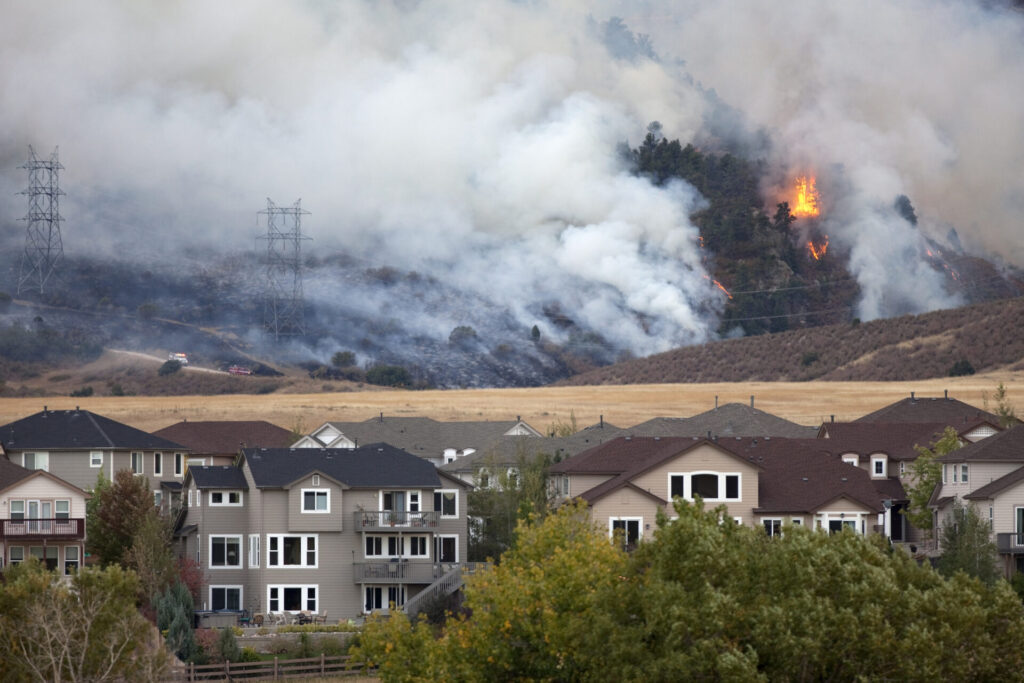Over 6,500 wildfires burned through Canada in 2023, during the most destructive fire season on record. With 18.5 million hectares scorched, the impact was felt from coast to coast and in the north. In light of climate change, endless kilometres of trees and increasingly hot, dry summers, experts are urging people across the country to protect their properties and help stop the spread.
There are simple measures homeowners can take to reduce the risk of property damage, as reported by FireSmart Canada, the National Fire Protection Association (NFPA) and other leading fire safety agencies. They are remarkably effective, as evidenced by houses that survived, intact, as wildfires ravaged communities from Fort McMurray in 2016 to Maui last summer, reducing surrounding structures to ashes.
A key step in making your home fire-resistant involves guarding against embers. Wildfires generate embers that are carried by wind. These bits of burning debris can travel up to two kilometres beyond a fire line and ignite new spot fires. If they land on a wood-shingled roof, a woodpile against a garage or even the junipers flanking a front door, poof. The structure can ignite. “An estimated 90 per cent of homes damaged or destroyed by wildland fire are ignited by sparks and embers,” according to the FireSmart Begins at Home Guide.
When embers land on a fire-resistant property, though, they tend to burn out before doing harm. To protect your place against wildfire damage, follow these tips.
Improve your Home Ignition Zone (HIZ)
The HIZ is space around your house you can modify to minimize fire risk. It’s divided into three areas where you can take specific action. The Immediate Zone includes your home, attached structures and the area extending 1.5 metres from there. The Intermediate Zone continues from 1.5 to 10 metres, followed by the Extended Zone, stretching from 10 to 30 metres.
Prioritize the Immediate Zone
It’s your home’s critical buffer against embers, radiant heat and direct flames from a wildfire. Here’s what to do:
Inspect your roof
Clear the rooftop and gutters of leaves, branches and debris, then caulk any cracks and replace missing or loose shingles. When it’s time for a new roof, choose Class-A, fire-rated roof material such as metal, asphalt, slate, clay or concrete. The difference is huge, as statistics show wildfire structure survival is four per cent for a flammable roof with no treatment or defensive action compared to 90 per cent for a non-combustible roof combined with mitigation measures in the HIZ. Learn more via FireSmart Canada’s Home Development Guide.
Check the deck
Clear yard waste and flammable materials from under the deck and sheath the underside with a fire-resistant material. If the deck is wood, replace any rotten or cracked boards and, better yet, when your budget allows, replace it all with a fire-rated surface. Cap deck joists with foil tape or flashing.
Eliminate entry points
Keep embers out by sealing or screening vents and screen your gutters to limit accumulation of debris. Make sure your home’s pet door is properly sealed and keep it closed during fire season. While you’re at it, fix any gaps in your home’s siding.
Assess windows and doors
When replacing these items, choose multi-pane, tempered glass windows and non-combustible or fire-rated doors and garage doors. Seal cracks in existing frames and keep windows and doors closed as much as possible during wildfire season.
Clear away vegetation
It’s fuel for fire. Swap flower beds for a 1.5 metre, non-combustible hardscape area using materials such as pea gravel, pavers, flagstone or concrete. Get rid of plants, organic mulch, yard trimmings and all flammables close to your house and deck. FireSmart landscaping offers more advice.
Move what burns
Relocate firewood, propane tanks, construction materials and anything ignitable so it’s at least 10 metres away from your house.
Stay abreast of exterior maintenance
Cut grass shorter than 10 centimetres, replace flammable plants with fire-resistant ones, prune and thin vegetation, routinely clear debris and follow HIZ guidelines for outbuildings on your property.
Keep learning
To find out what else you can do, in the Intermediate and Extended Zones and beyond, check the National Fire Protection Association’s Preparing Homes for Wildfire.

